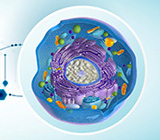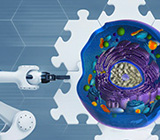-
REAGENT SERVICES
Hot!
-
Most Popular Services
-
Molecular Biology
-
Recombinant Antibody/Protein
-
Reagent Antibody
-
CRISPR Gene Editing
-
DNA Mutant Library
-
IVT RNA and LNP Formulations
-
Oligo Synthesis
-
Peptides
-
Cell Engineering
-
- CRISPR/Cas9 sgRNA
- CRISPR/Cas12a crRNA
- Prime Editing Guide RNA
- Base Editing Guide RNA
- HDR Templates
- gRNA + HDR Template Design Tools
- cGMP Guide RNA
- cGMP HDR Templates
- CRISPR/Cas Proteins
- CAR-T Knock-in Optimization Kit
- CRISPR Plasmids
- CRISPR gRNA Plasmid Libraries
- CRISPR Cell Lines
- Microbial Genome Editing
-
-
PRODUCTS
-
Most Popular Reagents
-
 Instruments
Instruments
-
Antibodies
-
ELISA Kits
-
Protein Electrophoresis and Blotting
-
Protein and Antibody Purification
-
Recombinant Proteins
-
Molecular Biology
-
Stable Cell Lines
-
Cell Isolation and Activation
-
 IVD Raw Materials
IVD Raw Materials
-
 Therapy Applications
Therapy Applications
-
Resources
-
- Pharmacokinetics and Immunogenecity ELISA Kits
- Viral Titration QC ELISA Kits
- -- Lentivirus Titer p24 ELISA KitHot!
- -- MuLV Titer p30 ELISA KitNew!
- -- AAV2 and AAVX Titer Capsid ELISA Kits
- Impurity Test ELISA Kits
- -- BSA ELISA Kit, 2G
- -- Cas9 ELISA KitNew!
- -- Protein A ELISA KitNew!
- -- His tagged protein detection & purification
- -- dsRNA ELISA Kit
- -- Endonuclease ELISA Kit
- COVID-19 Detection cPass™ Technology Kits
-
- Automated Maxi-Plasmid PurificationHot!
- Automated Mini-Plasmid PurificationNew!
- PCR Reagents
- S.marcescens Nuclease Benz-Neburase™
- DNA Assembly GenBuilder™
- Cas9 / Cas12a / Cas13a Nucleases
- Base and Prime Editing Nucleases
- GMP Cas9 Nucleases
- CRISPR sgRNA Synthesis
- HDR Knock-in Template
- CRISPR Gene Editing Kits and Antibodies
-
![AmMag™ Quatro Automated Plasmid Purification]() AmMag™ Quatro automated plasmid purification
AmMag™ Quatro automated plasmid purification
-
![Anti-Camelid VHH]() MonoRab™ Anti-VHH Antibodies
MonoRab™ Anti-VHH Antibodies
-
![ELISA Kits]() ELISA Kits
ELISA Kits
-
![Precast Gels]() SurePAGE™ Precast Gels
SurePAGE™ Precast Gels
-
![Quatro ProAb Automated Protein and Antibody Purification System]() AmMag™ Quatro ProAb Automated Protein and Antibody Purification System
AmMag™ Quatro ProAb Automated Protein and Antibody Purification System
-
![Target Proteins]() Target Proteins
Target Proteins
-
![AmMag™ Quatro Automated Plasmid Purification]() AmMag™ Quatro automated plasmid purification
AmMag™ Quatro automated plasmid purification
-
![Stable Cell Lines]() Stable Cell Lines
Stable Cell Lines
-
![Cell Isolation and Activation]() Cell Isolation and Activation
Cell Isolation and Activation
-
 IVD Raw Materials
IVD Raw Materials
-
![Quick
Order]() Quick Order
Quick Order
-
![Quick
Order]() Quick Order
Quick Order
- APPLICATIONS
- RESOURCES
- ABOUT US
- SIGN IN My Account SIGN OUT
- REGISTER

![Amino Acid Code Amino Acid Code]()
Biology Terms Dictionary
This Biology terms dictionary provides query services for biology and biochemistry terms. Please enter the biology or biochemistry terms you want to search.
List by Alphabet: A B C D E F G H I J K L M N O P Q R S T U V W X Y Z
transfection
Transfection is a laboratory technique used to introduce nucleic acids, like DNA or RNA, into eukaryotic cells, typically mammalian cells. This process is fundamental in molecular biology and biotechnology for studying gene function and protein expression, as well as for producing recombinant proteins and in gene therapy. Here are the key aspects of transfection:
1. Purpose: The primary goal of transfection is to temporarily or permanently introduce foreign genetic material into a cell to study the effects of new genes, silence genes, or produce proteins.
2. Types of Nucleic Acids:Transfection can involve the introduction of various types of nucleic acids, including plasmid DNA, small interfering RNA (siRNA), microRNA, or other RNA molecules.
3. Methods of Transfection:
o Chemical Methods: These involve using chemical compounds like calcium phosphate, liposomes, or polymers to form complexes with DNA/RNA, which are then taken up by the cell.
o Physical Methods: Electroporation (applying an electrical field to create temporary pores in the cell membrane) and microinjection (physically injecting the DNA into the cell) are common physical methods.
o Viral Methods: Utilizing modified viruses to deliver genetic material into cells. While technically termed transduction, it's often grouped under transfection in a broader sense.
4. Transient vs. Stable Transfection:
o Transient Transfection: The introduced DNA does not integrate into the host genome and is typically only expressed for a short period (days). This is used for short-term studies of gene function.
o Stable Transfection: Involves the integration of the DNA into the cell's genome, allowing for long-term study of gene function and heritable transmission to daughter cells.
5. Applications:
o Gene Expression Studies: To study the function of specific genes.
o Protein Production: For the production of recombinant proteins.
o Gene Silencing: Using siRNA or shRNA to knock down gene expression.
o Drug Discovery: Testing the effects of drugs on gene expression or cellular function.
oGene Therapy Research: Developing and testing gene therapy strategies.
6. Efficiency and Viability: Transfection efficiency (the percentage of cells that successfully take up the nucleic acid) and cell viability (the proportion of living cells post-transfection) are important considerations. The method chosen often depends on the cell type and the purpose of the experiment.
7. Challenges and Limitations: Not all cell types are easily transfected. Some, like primary cells, are more resistant to transfection. Additionally, some methods may be cytotoxic or result in low transfection efficiencies.
Transfection is a powerful tool in cell and molecular biology, providing insights into gene function, regulation, and cellular mechanisms. It's crucial in the development of new therapeutic strategies, including gene therapy and vaccine development.
- Tags:
- Cell Engineering
Related Biology Tools
-
GenSmart™ Codon Optimization
GenSmart Optimization is a free online tool for performing codon optimization to improve gene expression. GenScript's patented algorithms are integrated into the tool to optimize the computing capability of high-performance sequence generation.
-
DNA Construct Design Tool
GenSmart™ Design is a free online DNA construct design tool developed by GenScript. GenSmart™ Design has two design modules, the Create Construct module for individual plasmid design and the Create Library module for DNA library design.
-
Codon Frequency Tables
This online tool shows commonly used genetic codon frequency table in expression host organisms including Escherichia coli and other common host organisms.
Service and Products

Cell Engineering
From lentivirus packaging to generating clonal cell lines, let us assist you on your assay cell line creation project.

Assay Cell Line Development
For Drug Discovery, Toxicity Testing and Basic Research.

Research Grade Lentiviral Vector Packaging
Lentiviruses are a powerful gene delivery vector that ensures long-term expression of your target transgene.

Research Grade AAV
Our beta-testers are important to us and we are offering heavily discounted prices and additional guarantees.
-
Top Search
-
Hot Glossary
-
Antibody
If you know of any terms that have been omitted from this glossary that you feel would be useful to include, please send detail to the Editorial Office at GenScript: website@genscript.com
If your term is adopted, we will send 1,000 EzCoupon points to your GenScript account.
-





































